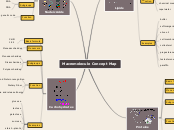by Laura McGuire 8 years ago
6907
Macromolecules Concept Map
Macromolecules are formed from many subunits. The four classes of macromolecules that make life possible are proteins, nucleic acids, lipids and carbohydrates.

by Laura McGuire 8 years ago
6907

More like this